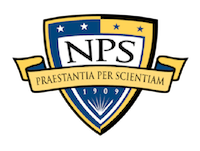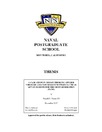CLASSIFYING ADS-B TRAJECTORY SHAPES USING A DENSE FEED-FORWARD NEURAL NETWORK

Download
Author
Gingrass, Colton J.
Date
2020-06Advisor
Singham, Devaushi I.
Second Reader
Atkinson, Michael P.
Metadata
Show full item recordAbstract
There is a recent abundance of flight trajectory data due to Automatic Dependent Surveillance-Broadcast (ADS-B) becoming a prevalent and required aviation traffic control system. Motivated by incidents like the September 11, 2001, attacks, the Department of Defense and civilian intelligence agencies have taken a renewed interest in being able to quickly flag and act on flight pattern behavior that is considered outside the norm. Due to the large volume of daily flights in the United States alone, it is almost impossible for human operators to monitor and analyze individual flights for anomalous behavior. The Department of Defense and civilian intelligence agencies stand to gain increased capability and capacity if given the ability to analyze and flag unusual flight trajectories in a matter of seconds. Anomalous behavior in many cases is determined by the overall shape of the flight pattern. This thesis uses calculated shape features to classify nine pre-determined categories of ADS-B flight trajectories using a Deep Sequential Neural Network. With a data set of 11,303 human-classified tracks, the network has performed with an overall accuracy of 71% and a categorical average F1 score of 0.33 on a validation set. It has also performed with 70% accuracy and a categorical average F1 score of 0.25 on a ten-fold cross validation. The proposed method shows promise in being able to select unusual shapes from straight trajectories and in some cases may be able to classify them.
Rights
This publication is a work of the U.S. Government as defined in Title 17, United States Code, Section 101. Copyright protection is not available for this work in the United States.Collections
Related items
Showing items related by title, author, creator and subject.
-
A case study in Design Thinking applied through Aviation Mission Support Tactical Advancements for the Next Generation (TANG)
Turner, Donald E., III (Monterey, California: Naval Postgraduate School, 2017-12);In November of 2016, over 40 Naval Aviators from various platforms in the United States Navy and United States Marine Corps converged on Defense Innovation Unit Experimental in Mountain View, California, to participate in ... -
Lasers for Satellite Uplinks and Downlinks
Dmytryszyn, Mark; Crook, Matthew; Sands, Timothy (MDPI, 2020);The use of Light Amplification by Stimulated Emission of Radiation (i.e., LASERs or lasers) by the U.S. Department of Defense is not new and includes laser weapons guidance, laser-aided measurements, even lasers as weapons ... -
Design and integration of a Flight Management System for the unmanned air vehicle FROG
Rivers, Timothy C. (Monterey, California. Naval Postgraduate School, 1998-12);The purpose of this thesis is to design, integrate and flight test a Flight Management System (FMS) for the computer control of an unmanned air vehicle (UAV). By combining modern control design techniques and the capabilities ...


 20Jun_Gingrass_Colton.pdf (1.184Mb)
20Jun_Gingrass_Colton.pdf (1.184Mb)

